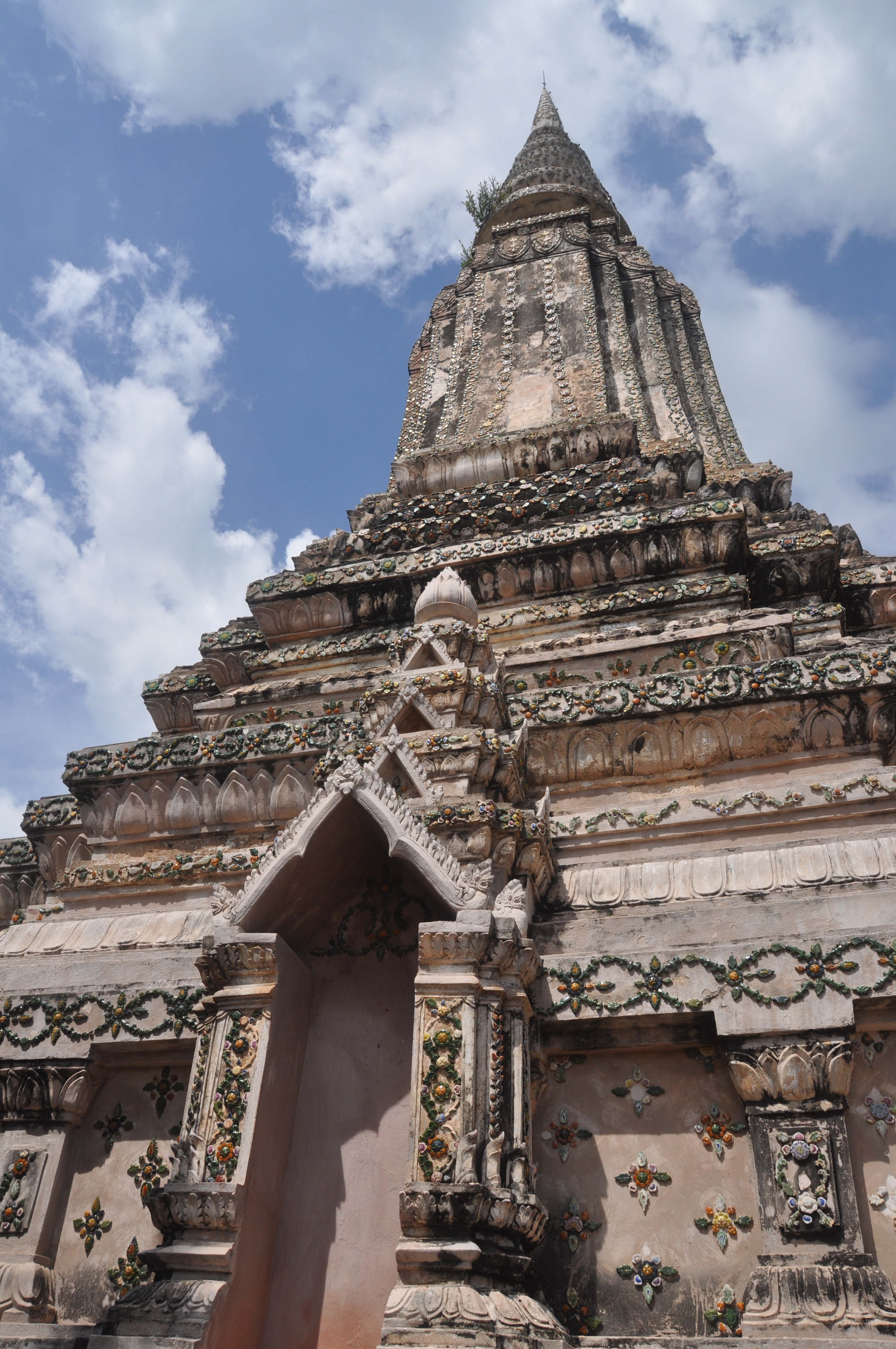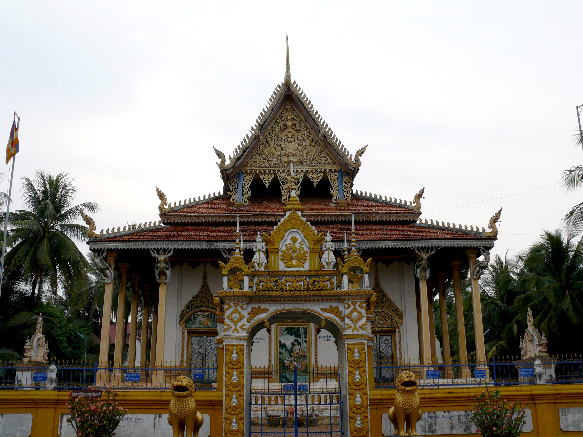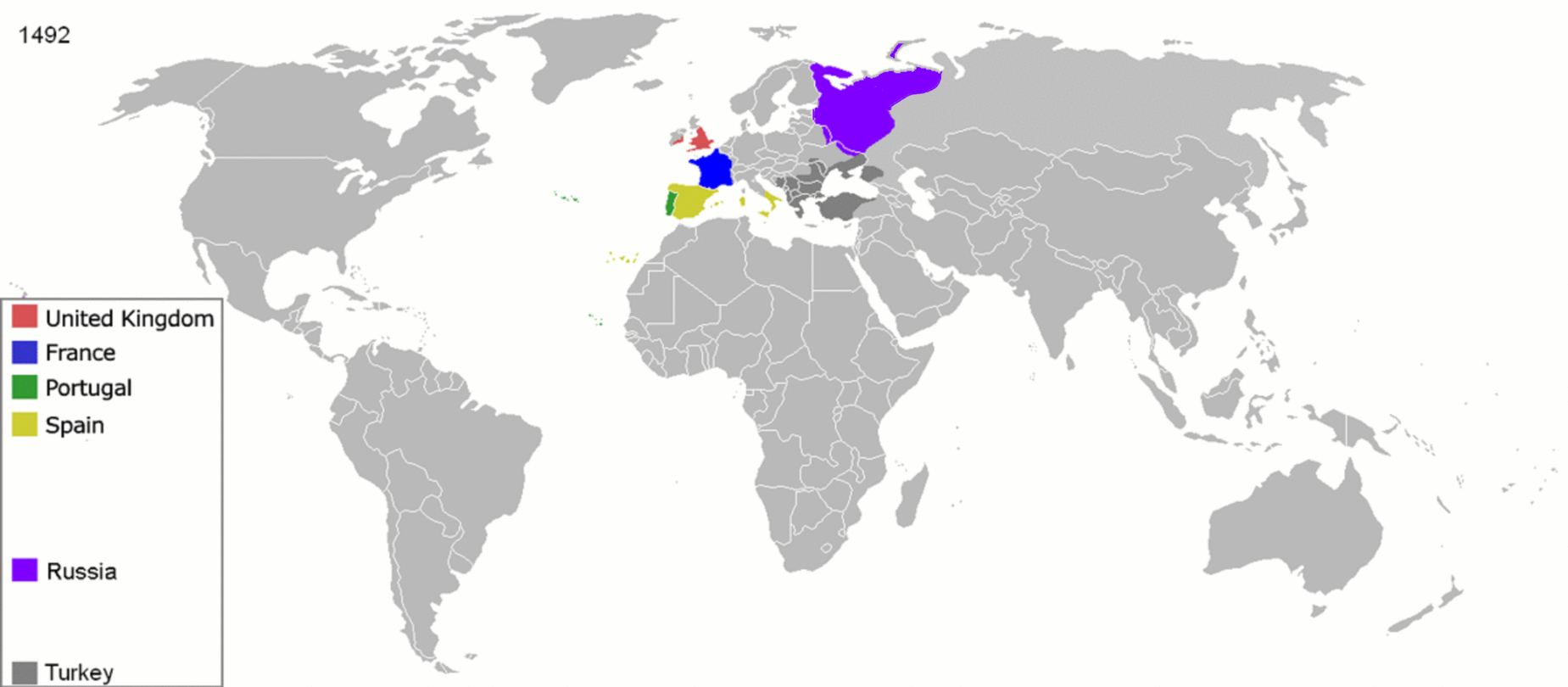|
Si Votha
Si Votha ( km, ស៊ីវត្ថា; also spelled Si Vattha; c. 1841 – 31 December 1891) was a Cambodian prince who was briefly a contender for the throne. He spent his entire life fighting his half brother King Norodom for the throne. Si Votha was a grandson of King Ang Eng (reigning from 1772 to 1796) and a son of King Ang Duong. His biographical notes only record that he had a daughter named Neak Ang Mechas (Princess) Ang Duong Rath Votha. Si Votha had two half-brothers, Norodom and Sisowath of Cambodia, with Norodom being the king's chosen heir. Upon King Ang Duong's death, a succession struggle ensued, with Si Votha attempting to take power while his half brother Norodom was occupied with a rebellion; eventually Norodom gained the upper hand when he gained the backing of Sisowath. Rebellion When Norodom was officially crowned king in 1864 in a joint coronation ceremony supervised by the French and Siamese officials, Si Votha once again made no secret of his intention ... [...More Info...] [...Related Items...] OR: [Wikipedia] [Google] [Baidu] |
Ang Duong
Ang Duong ( km, អង្គឌួង ; 12 June 1796 – 19 October 1860) was the King of Cambodia from 1841 to 1844 and from 1845 to his death in 1860. Formally invested in 1848, his rule benefited a kingdom that suffered from several centuries of royal dissent and decline. His politics focused on sustained national unity and identity and the minimization of foreign interference. He issued the first substantial revision of the legal codex in centuries, and he encouraged and supervised religious and cultural reforms. Confronted with increasing Siamese and Vietnamese encroachment, he attempted to establish an alliance with colonial France on a sovereign basis. Although this alliance ultimately culminated in the 90-year period of the French protectorate of Cambodia, King Ang Duong's actions were the foundation for the modern united state of Cambodia. Ang Duong ascended the throne with the title ''Preah Karuna Preah Bat Samdech Preah Harireak Reamea Issathipadei Ang Duong'' ( km, ... [...More Info...] [...Related Items...] OR: [Wikipedia] [Google] [Baidu] |
Battambang
Battambang ( km, បាត់ដំបង, UNGEGN: ) is the capital of Battambang Province and the third largest city in Cambodia. Founded in the 11th century by the Khmer Empire, Battambang is the leading rice-producing province of the country. For nearly 100 years it was a major commercial hub and provincial capital of Siamese province of Inner Cambodia (1795-1907), though it was always populated by Khmer, with some ethnic Vietnamese, Lao, Thai and Chinese. Battambang remains the hub of Cambodia's northwest, connecting the region with Phnom Penh and Thailand. The city is situated on the Sangkae River, a tranquil, small body of water that winds its way picturesquely through Battambang Province. As with much of Cambodia, French Colonial architecture is a notable aspect of the city, with some of the best-preserved examples in the country. Now the government and Ministry of Culture and Fine Art are preparing documents to nominate The Old Town of Battambang in the list of UNESC ... [...More Info...] [...Related Items...] OR: [Wikipedia] [Google] [Baidu] |
Cambodian Princes
Cambodian usually refers to: * Something of, from, or related to the country of Cambodia ** Cambodian people (or Khmer people) ** Cambodian language (or Khmer language) ** For citizens and nationals of Cambodia, see Demographics of Cambodia ** For languages spoken in Cambodia, see Languages of Cambodia Cambodian may also refer to: Other * Cambodian architecture * Cambodian cinema * Cambodian culture * Cambodian cuisine * Cambodian literature * Cambodian music * Cambodian name * Cambodian nationalism * Cambodian descendants worldwide: ** Cambodian Americans ** Cambodian Australians ** Cambodian Canadians ** Cambodians in France See also * *List of Cambodians {{Short description, none This is a list of notable Cambodian people, persons from Cambodia or of Khmer descent. * Adda Angel * Am Rong * Ampor Tevi * Arn Chorn-Pond * Beat Richner * Bérénice Marlohe * Bour Kry * Chan Nak * Chan Sy * Chantho ... {{disambig Language and nationality disambiguation pages ... [...More Info...] [...Related Items...] OR: [Wikipedia] [Google] [Baidu] |
Usurper
A usurper is an illegitimate or controversial claimant to power, often but not always in a monarchy. In other words, one who takes the power of a country, city, or established region for oneself, without any formal or legal right to claim it as one's own. Usurpers can rise to power in a region by often unexpected physical force, as well as through political influence and deceit. Etymology The word originally came from the Latin word ''usurpare'' (“to seize", "to take forcefully" or "to use”). Politics The Greeks had their own conception of what usurpers were, calling them tyrants. In the ancient Greek usage, a tyrant (''tyrannos''/''τύραννος'' in Greek) was an individual who rose to power via unconstitutional or illegitimate means, usually not being an heir to an existing throne. Such individuals were perceived negatively by political philosophers such as Socrates, Plato and Aristotle. Usurpers often try to legitimize their position by claiming to be a descendant ... [...More Info...] [...Related Items...] OR: [Wikipedia] [Google] [Baidu] |
French Colonial Empire
The French colonial empire () comprised the overseas colonies, protectorates and mandate territories that came under French rule from the 16th century onward. A distinction is generally made between the "First French Colonial Empire", that existed until 1814, by which time most of it had been lost or sold, and the "Second French Colonial Empire", which began with the conquest of Algiers in 1830. At its apex between the two world wars, the second French colonial empire was the second-largest colonial empire in the world behind the British Empire. France began to establish colonies in North America, the Caribbean and India in the 17th century but lost most of its possessions following its defeat in the Seven Years' War. The North American possessions were lost to Britain and Spain but the latter returned Louisiana (New France) to France in 1800. The territory was then sold to the United States in 1803. France rebuilt a new empire mostly after 1850, concentrating chiefly in Afri ... [...More Info...] [...Related Items...] OR: [Wikipedia] [Google] [Baidu] |
Indochinese
Mainland Southeast Asia, also known as the Indochinese Peninsula or Indochina, is the continental portion of Southeast Asia. It lies east of the Indian subcontinent and south of Mainland China and is bordered by the Indian Ocean to the west and the Pacific Ocean to the east. It includes the countries of Cambodia, Laos, Myanmar, Thailand and Vietnam, with peninsular Malaysia sometimes also being included. The term Indochina (originally Indo-China) was coined in the early nineteenth century, emphasizing the historical cultural influence of Indian and Chinese civilizations on the area. The term was later adopted as the name of the colony of French Indochina (today's Cambodia, Laos, and Vietnam). Today, the term, Mainland Southeast Asia, in contrast to Maritime Southeast Asia, is more commonly referenced. Terminology The origins of the name Indo-China are usually attributed jointly to the Danish-French geographer Conrad Malte-Brun, who referred to the area as in 1804, and the ... [...More Info...] [...Related Items...] OR: [Wikipedia] [Google] [Baidu] |
European Colonialism
The historical phenomenon of colonization is one that stretches around the globe and across time. Ancient and medieval colonialism was practiced by the Phoenicians, the Greeks, the Turkish people, Turks, and the Arabs. Colonialism in the modern sense began with the "Age of Discovery", led by Portuguese Empire, Portuguese, who became increasingly adventuresome following the Portuguese conquest of Ceuta, conquest of Ceuta in 1415, aiming to control navigation through the Strait of Gibraltar, expand Christianity, obtain plunder, and suppress predation on Portuguese populations by Barbary pirates as part of a longstanding African slave trade; at that point a minor trade, one the Portuguese would soon slavery in Portugal, reverse and surpass. Around 1450, based on North African fishing boats, a lighter ship was Iberian ship development, 1400–1600, developed, the caravel, which could sail further and faster, was highly maneuverable, and could sail "sailing into the wind, into the w ... [...More Info...] [...Related Items...] OR: [Wikipedia] [Google] [Baidu] |
Hill People
Hill people, also referred to as mountain people, is a general term for people who live in the hills and mountains. This includes all rugged land above and all land (including plateaus) above elevation. The climate is generally harsh, with steep temperature drops between day and night, high winds, runoff from melting snow and rain that cause high levels of erosion and thin, immature soils. Climate change is likely to place considerable stress on the mountain environment and the people who live there. People have used or lived in the mountains for thousands of years, first as hunter-gatherers and later as farmers and pastoralists. The isolated communities are often culturally and linguistically diverse. Today about 720 million people, or 12% of the world's population, live in mountain regions, many of them economically and politically marginalized. The mountain residents have adapted to the conditions, but in the developing world they often suffer from food insecurity and poor ... [...More Info...] [...Related Items...] OR: [Wikipedia] [Google] [Baidu] |
Duong Chakr
Norodom Duong Chakr ( km, នរោត្តម ឌួងចក្រ) was a Cambodian prince of the late nineteenth century, the fifth son of King Norodom of Cambodia who was deported to French Algeria where he died in exile in 1897. Biography Royal education Prince Norodom Duong Chakr was the fifth son of King Norodom which he had with Cham Socheat Bopha Nuon, also known as Princess Khun Than, who had been a favorite of King Ang Duong beforehand. He was born in the former Oudong Palace in 1861 and was wise and well-educated both on national and international affairs. He spoke fluent Khmer, Thai and French. Prince in the anti-French rebellion At first, Duong Chakr was a favorite of his father, who considered him, according to contemporary sources as a "smart and sassy fellow". However, opposing the French presence in Cambodia, Duong Chark became a staunch supporter of Si Votha's rebellion against France in 1885–1886, arousing support even from Vietnamese minorities, befo ... [...More Info...] [...Related Items...] OR: [Wikipedia] [Google] [Baidu] |
Stieng People
The Stieng people ( vi, Xtiêng) are an ethnic group of Vietnam and Cambodia. They speak Stieng, a language in the Bahnaric group of the Mon–Khmer languages. Most Stieng live in Bình Phước Province (81,708 in 2009) of the Southeast region of Vietnam. In Cambodia, they are grouped under the heading Khmer Loeu The Khmer Loeu ( km, ជនជាតិខ្មែរលើ ; "upper Khmers") is the collective name given to the various indigenous ethnic groups residing in the highlands of Cambodia. The Khmer Loeu are found mainly in the northeastern pro ..., referring to non-Khmer ethnic groups. References *Phùng Đăn Quang. 2005. ''Nhạc khí dân tộc S'Tiêng usical instruments of the S'Tiêng people'. Hanoi: Nhà xuất bản trẻ. External linksStieng language pagefrom Ethnologue site Ethnic groups in Vietnam Ethnic groups in Cambodia {{Vietnam-stub ... [...More Info...] [...Related Items...] OR: [Wikipedia] [Google] [Baidu] |
Kampong Thom (city)
Kampong Thom ( km, ក្រុងកំពង់ធំ), also Krong Kampong Thom, is the capital city of Kampong Thom Province, Cambodia lying on the bank of the Steung Saen River. It is a mid-way stopover on the National Highway No 6 halfway between Phnom Penh and Siem Reap Siem Reap ( km, សៀមរាប, ) is the second-largest city of Cambodia, as well as the capital and largest city of Siem Reap Province in northwestern Cambodia. Siem Reap has French colonial and Chinese-style architecture in the Old F ....Matt Jacobson ''Adventure Cambodia: An Explorer's Travel Guide'' 9749575539 2004 p131 "Highway 6 continues on to the left, going to Kampong Thom and Siem Reap." The Kampong Thom High School is North of the river bridge, and the Kampong Thom Market is on the south side of the bridge, followed by the main street and dual carriageway. Further south along the road is Steung Saen ( km, ក្រុងស្ទឹងសែន) also a district in Kampong Tho ... [...More Info...] [...Related Items...] OR: [Wikipedia] [Google] [Baidu] |
Mekong
The Mekong or Mekong River is a trans-boundary river in East Asia and Southeast Asia. It is the world's List of rivers by length, twelfth longest river and List of longest rivers of Asia, the third longest in Asia. Its estimated length is , and it drains an area of , discharging of water annually. From the Tibetan Plateau the river runs through China, Myanmar, Laos, Thailand, Cambodia, and Vietnam. The extreme seasonal variations in flow and the presence of rapids and waterfalls in the Mekong make navigation difficult. Even so, the river is a major trade route between western China and Southeast Asia. Names The Mekong was originally called ''Mae Nam Khong'' from a contracted form of Tai language, Tai shortened to ''Mae Khong''. In Thai and Lao, ''Mae Nam'' ("Mother of Water[s]") is used for large rivers and ''Khong'' is the proper name referred to as "River Khong". However, ''Khong'' is an archaic word meaning "river", loaned from Austroasiatic languages, such as Vietnamese ... [...More Info...] [...Related Items...] OR: [Wikipedia] [Google] [Baidu] |




.jpg)
